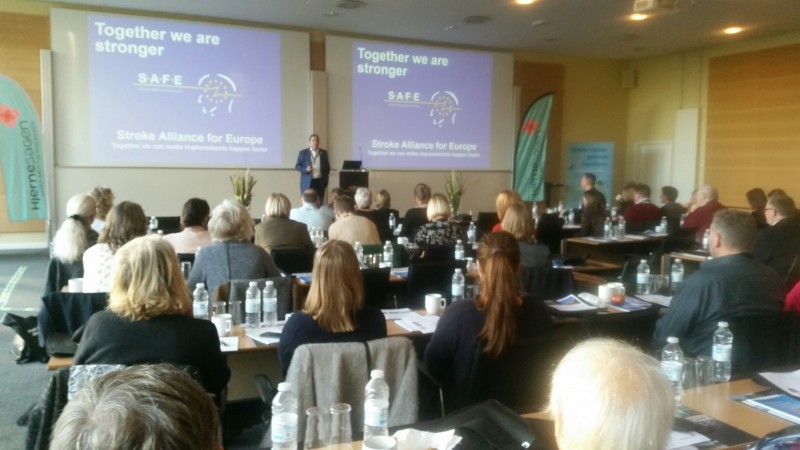
Nov 1, 2017
Research needs to be the platform for action in the decision making and policy sphere- said Jon Barrick, SAFE President at the World Stroke Day event in Denmark, on 30th October 2017.
Please see here the full presentation from this event.

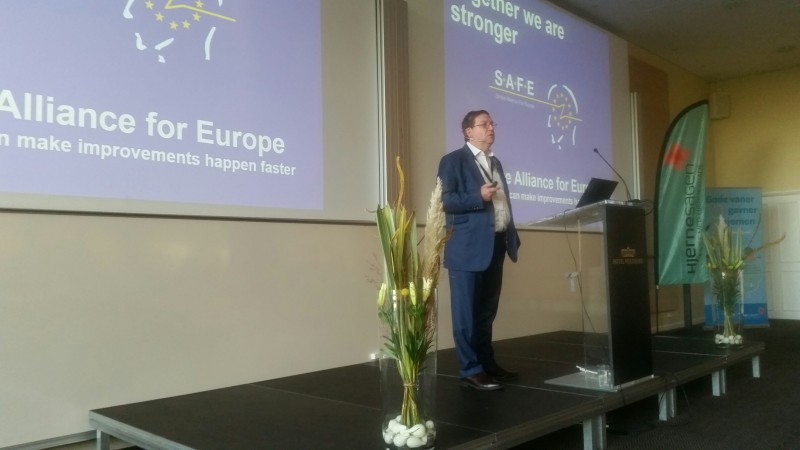
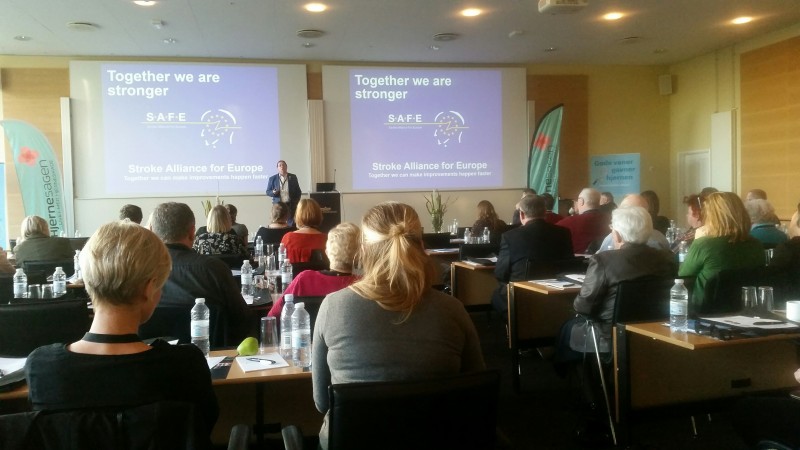
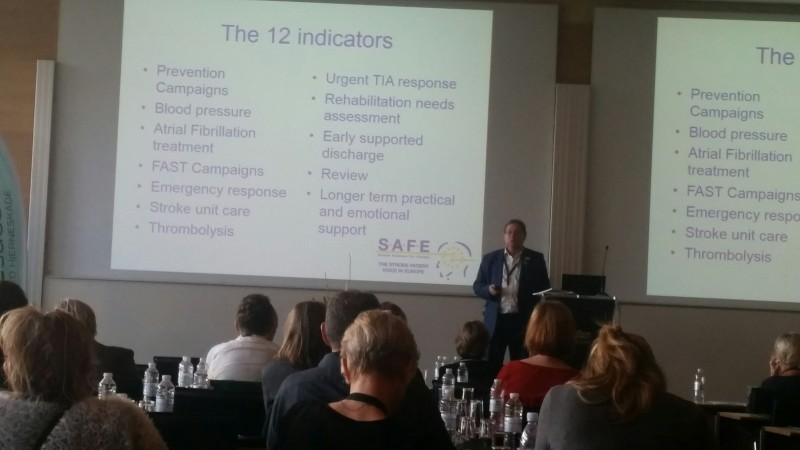
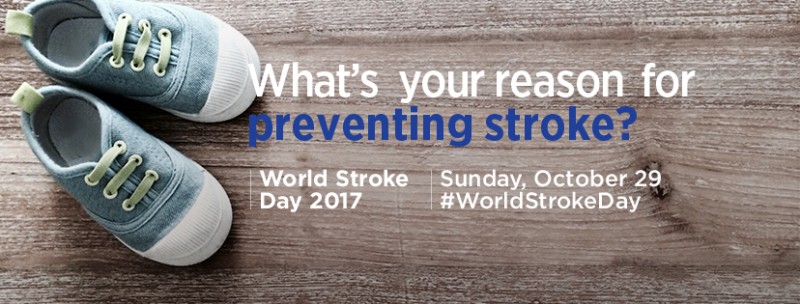
Oct 29, 2017
“WHAT IS YOUR REASON TO PREVENT STROKE?”
“One day we will be able to talk about a stroke and what it used to be and how we had a hand in stopping them.” – Brady Johnson, stroke survivor
Brussels, October 29, 2017: Good news is that stroke is preventable, with ten modifiable risk factors accounting for around 90% of the risk of stroke. Bad news is that we still largely fail to prevent it. On this World Stroke Day, we call upon Governments and health care system decision makers to implement population wide prevention strategies that address the biggest contributors to stroke- said Jon Barrick, SAFE President, adding that healthcare, researchers, stroke survivors and support organisations should all work together on developing and delivering effective national, regional and global stroke prevention strategies and campaigns. (more…)
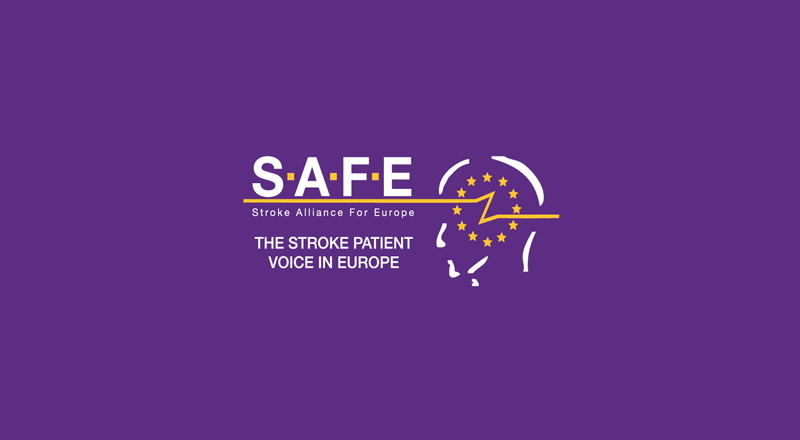
Oct 27, 2017
Blood-thinning drugs not only reduce the risk of stroke in patients with atrial fibrillation (AF) but are also associated with a significant reduction in the risk of dementia, according to new research published in the European Heart Journal.
Among 444,106 patients with atrial fibrillation (an abnormal heart rhythm), those who were taking anticoagulant drugs to prevent blood clots at the start of the study had a 29% lower risk of developing dementia than patients who were not on anticoagulant treatment. When the researchers looked at what happened during the period of time that the patients continued to take the drugs, they found an even bigger, 48% reduction in the risk of dementia. (more…)

Oct 26, 2017
The average lifespan of African Americans is significantly shorter than white Americans, mostly because of heart disease and stroke, which contributed to more than two million years of life lost among African Americans between 1999 and 2010, according to a new scientific statement published in the American Heart Association’s journal Circulation. (more…)

Oct 26, 2017
Heart disease patients who practice yoga in addition to aerobic exercise saw twice the reduction in blood pressure, body mass index and cholesterol levels when compared to patients who practiced either Indian yoga or aerobic exercise alone, according to research to be presented at the 8th Emirates Cardiac Society Congress in collaboration with the American College of Cardiology Middle East Conference October 19-21, 2017 in Dubai. (more…)

Oct 20, 2017
 Sarah is the International Development Manager at the World Stroke Organization; leading, developing and implementing a programme of capacity building activities for new and emerging patient stroke support organizations (SSOs) around the world.
Sarah is the International Development Manager at the World Stroke Organization; leading, developing and implementing a programme of capacity building activities for new and emerging patient stroke support organizations (SSOs) around the world.
What brought you to Stroke Support Organisation Faculty Tool?
I have been working with local organisations on development projects internationally for a number of years. I have spent time supporting organisations to develop their capacity and skills to deliver quality services and engage in advocacy.
What is your role?
I am the International Development Manager with the World Stroke Organization and Stroke Association UK and we work in partnership with the Stroke Alliance for Europe. My role is to lead the capacity building programme for patient stroke support organisations around the world. This includes supporting organisations to set up, to develop projects and to engage in advocacy.
What makes you excited to be part of this project?
I have witnessed the changes that empowered local organisations can make to the policies and practices that affect people’s lives, most recently this has been patient stroke support organisations from across the world. This project is exciting as it is an opportunity to break new ground in the resources available to enable stroke support organisations to develop their skills and contribute to changes that can improve the lives of people affected by stroke.
How will your background in community development help you in this project?
The community development work that I engage in is based on partnership, solidarity and respect. I seek to understand the context in which stroke support organisations are working and to develop solutions together. As such, in writing content for this online resource, we are encouraging the engagement of members of SAFE to help us ensure that the content is as accessible and relevant as possible. We do not want a resource to be developed in isolation from the concerns and priorities of those who will be using it.
In your opinion why is the patient voice so important?
Those most affected by stroke need to be at the heart of solutions that address the gaps in stroke policy and practice. Again solutions cannot be driven without considering the experiences, insights and views of the people with lived experience. Time and again we see initiatives fail because the expertise of patients was not considered.
How do you see this project and e-learning tool helping SSOs?
I often hear from SSOs that they want tools and resources to help them grow and develop. We have a great opportunity to create a resource specifically for SSOs that responds to their expressed needs, areas of interest and appropriate ways to access information and to learn and take action.
Given the diverse geographical spread of SAFE’s members how to you take into account their unique experiences and context?
SAFE’s diverse membership is a hugely rich resource for the development of this project. We see it as a positive that we can draw on and share such a range of experiences from different contexts, and guidance and insights from different SSOs. There is an opportunity here to make this resource dynamic, by considering these different contexts whilst also including guidance that is transferable – for example whatever context you are in you need to find collaborators for your advocacy work, and whatever context you are in you need to be specific about what your priority activities are and therefore what funds you will need.
What long term issues and benefits do you envisage?
I think this is just the beginning; a long term issue is how we will continue to encourage people to use the resource and how we expand content and reach. I envisage this resource as further strengthening the European stroke patient network and in time the global stroke patient network.

Oct 20, 2017
The Osservatorio Ictus Italia, in collaboration with S.A.F.E. – Stroke Alliance for Europe and with the support of Member of European Parliament, Mr Aldo Patriciello, presented on 17th October 2017 in Rome the Italian translation of the “Burden of Stroke in Europe“, a study done by researchers at King’s College London which presents an in-depth analysis of the state of awareness, information and prevention of this health emergency, care offer, rehabilitation, support and social integration and, in general, the lives of European citizens affected by stroke.

The study, commissioned to researchers at King’s College in London by Stroke Alliance for Europe, looked at data, documents and information from 35 European countries, including Italy, noting significant differences between different care models and disparities in the possibilities of access to therapies. (more…)

Oct 18, 2017
For this year’s World Stroke Day, on 29th October, Blëtz a.s.b.l, a stroke support organisation from Luxembourg organised a conference “I am no longer myself” – When the handicap is invisible – approach to stroke from the neuropsychology perspective.
The event was organised under the patronage of HRH Madam Grand Duchess, Heiress Stéphanie, Mr. Burgomaster of the Commune of Bettembourg, Dr. Jean-Claude Schmit, Director of Health and Dr. Monique Reiff, CHL neurologist.
This conference took place on Sunday, 29th October at 16.00 hours at Château de Bettembourg, in Luxembourg.
At the same time, there was a presentation of the book “You have to be a fighter! Life after a stroke“ by Chantal Keller. (more…)

Oct 17, 2017
At a recently held event in EU Parliament, Geography matters: Inequalities in Access to Stroke Care and Innovation a stroke survivor from Belgium shared his story with the auditorium. He agreed to share it also here, so more people could see his testimony.
“My name is Marc van Dorst.
I live in Wilrijk, a suburb of the beautiful city of Antwerp.
I am 62 years old, happily married and a proud father of 4 children. (more…)

Oct 16, 2017
A new University of Liverpool study, published today in Brain and Behaviour, examines the wide range of visual impairments developed by stroke survivors.
Approximately 65% of acute stroke survivors have visual impairment which typically relates to impaired central or peripheral vision, eye movement abnormalities, or visual perceptual defects. (more…)









 Sarah is the International Development Manager at the World Stroke Organization; leading, developing and implementing a programme of capacity building activities for new and emerging patient stroke support organizations (SSOs) around the world.
Sarah is the International Development Manager at the World Stroke Organization; leading, developing and implementing a programme of capacity building activities for new and emerging patient stroke support organizations (SSOs) around the world.



